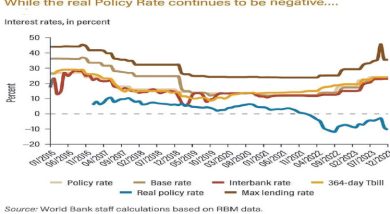Malawi-India trade rises, legumes top export

Malawi’s total trade with India rose to over $174 million in 2012 as
exports more than doubled while imports shrank, consequently narrowing
the deficit between Delhi and Lilongwe.
Data provided by the Trade Law Centre (Tralac), shows that total trade
between Malawi and India rose by about 10 percent in 2012 from $157
million in 2011. The data further indicates that exports to the sub
continent more than doubled from $20 million to $43 million while
imports dropped by five percent to $131 million in 2012, consequently
shrinking the trade deficit by 25 percent to $88 million.
According to the data, legumes at $37 million topped exports to India
while medical supplies at $43 million topped imports to Malawi in
2012.
Commenting on the trade performance, Innovations for Poverty Action
(IPA) country director Thomas Munthali, said there is a huge market
for legumes but Malawi is not doing enough to exploit the opportunity.
“Most legumes are grown by smallholder farmers and so we need
government to provide incentives such as tax holidays to large-scale
farmers to exploit this opportunity. Although, legumes may not
automatically become an alternative to tobacco, they complement it,”
said Munthali.
Malawi investment and Trade Centre (MITC) public relations manager,
Deliby Nyali in an interview on Monday, corroborated with Munthali in
the size of the market for legumes based on the demand that the agency
gets.
She specifically pointed out that there is a growing market for
legumes in India, especially for pigeon peas.
“There is huge demand for the legumes in India, however we have noted
that some exporters do not meet the export requirements in terms of
quality. We have been implementing a number of training programmes for
exporters which are aimed at equipping these traders to meet standards
and quality requirements,” she said.
Experts have blamed Malawi’s inability to export more legumes such as
groundnuts to lucrative markets, including the European Union, on
stringent sanitary and phytosanitary standards such as minimum
aflatoxin content.
Currently, Malawi and India have a bilateral trade agreement and in
addition there is a duty free trade preference for least developed
countries.
According to the Tralac data, trade deficit between the two partners
shrank from $117 million in 2011 to $88 million in 2012.
Apart from legumes, Malawi’s other top exports to India in 2012
included cotton, tea, hides and scrap metal while imports from Delhi
to Lilongwe included steel and iron, bicycle parts, and woven fabrics.
Malawi is implementing the National Export Strategy (NES) which is
aimed at providing a road map to generate sufficient exports to match
imports.
The strategy prioritises three export-oriented clusters for
diversification: oil seeds products, sugar cane and manufacturers.





